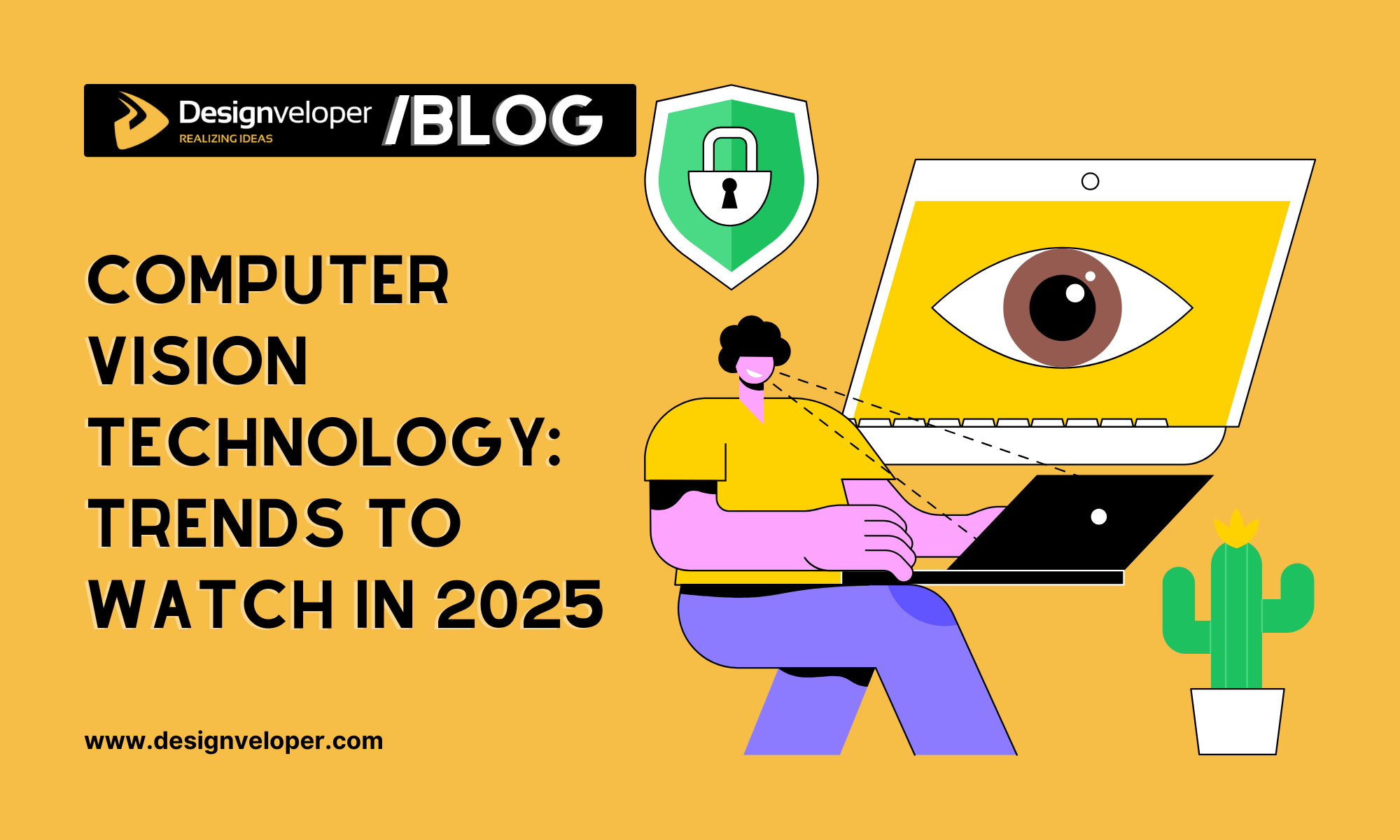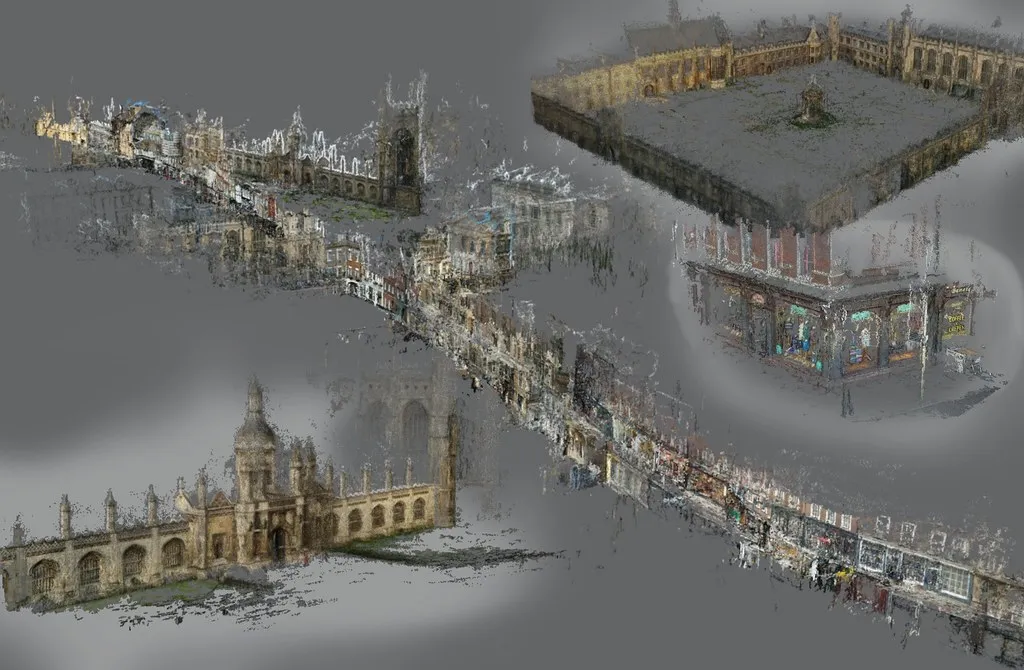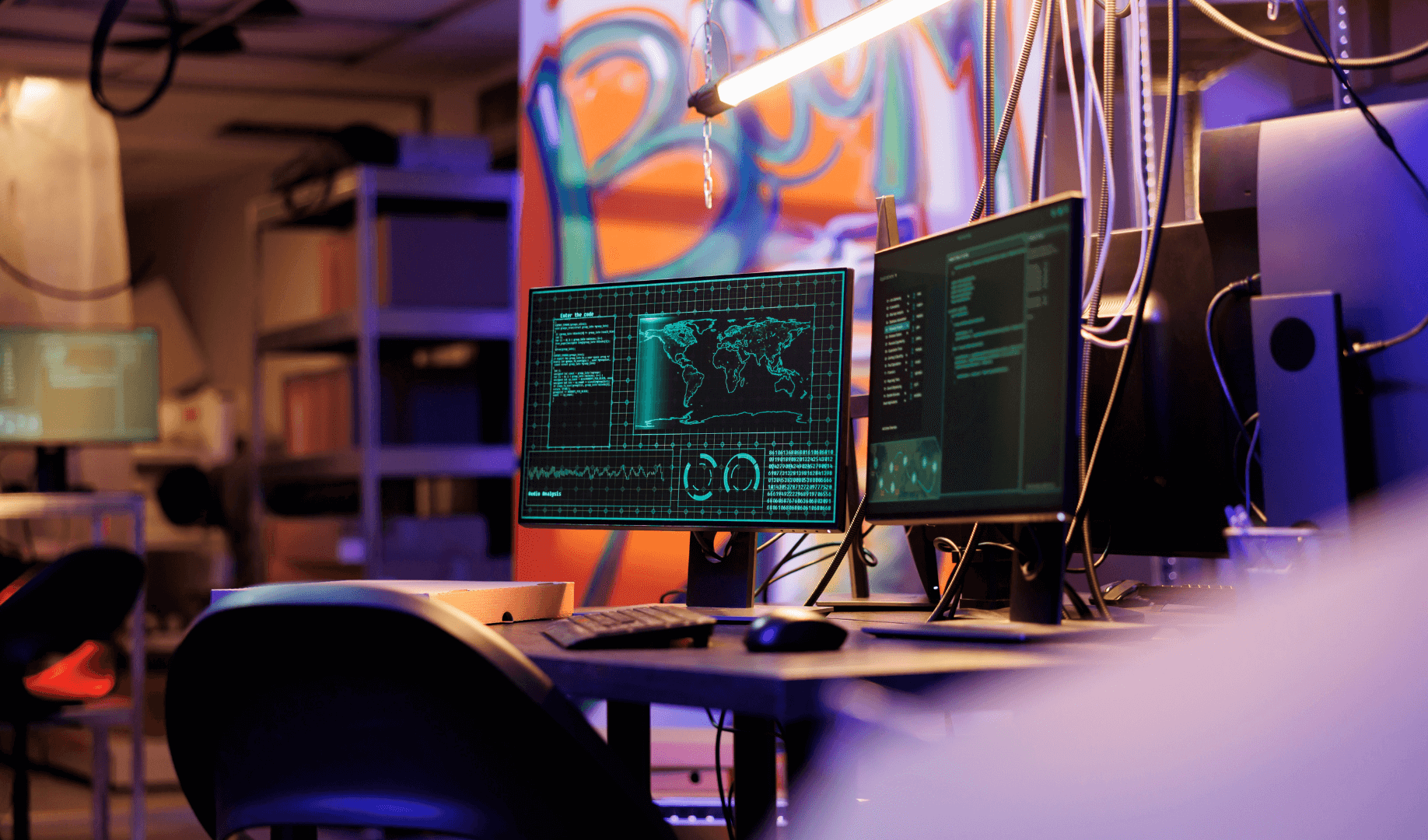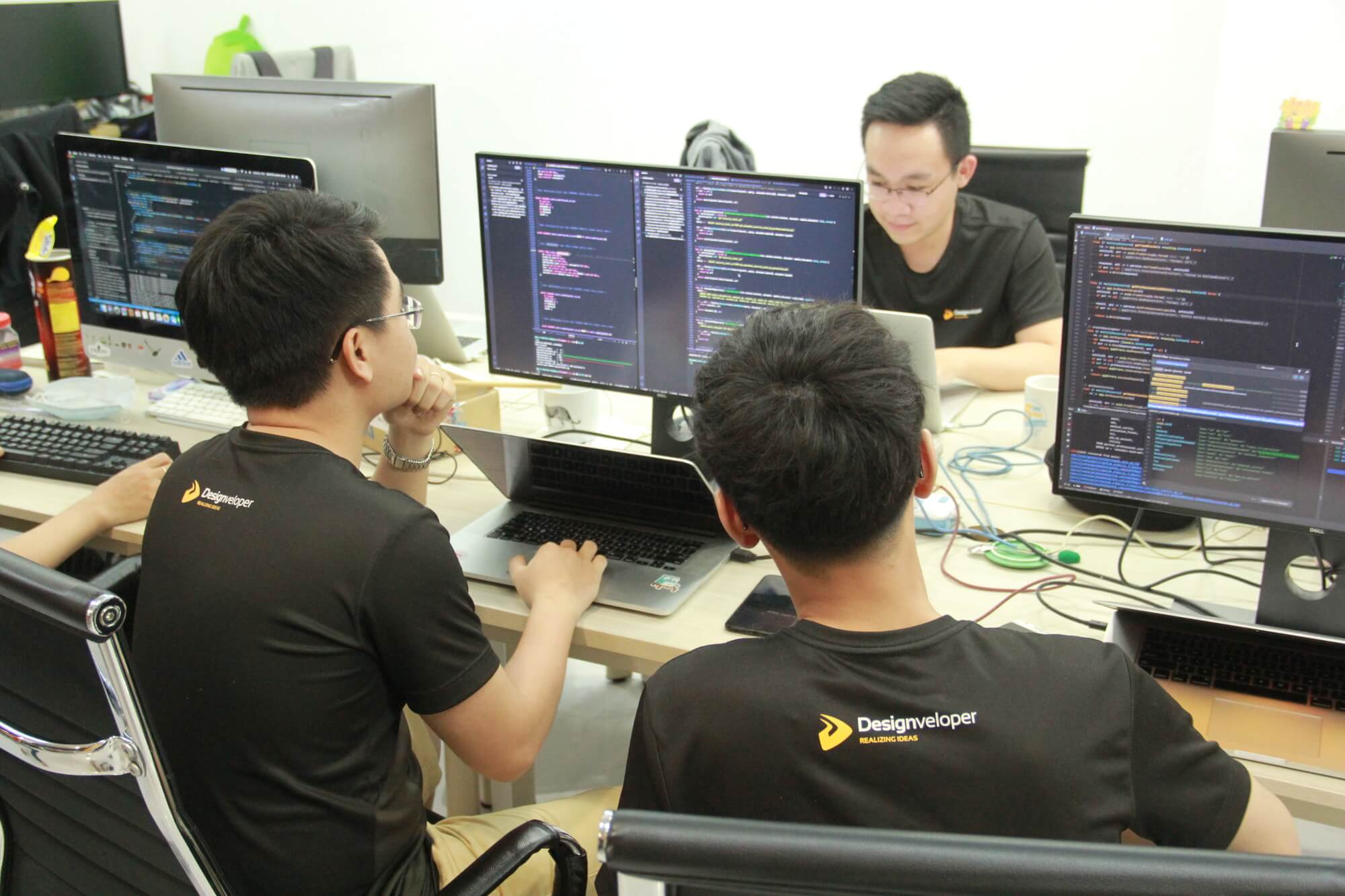Computer Vision Technology: 5 Trends to Watch in 2025

Computer vision technology is rapidly evolving, transforming industries from healthcare to automotive. Several trends will make this field evolve in 2025. The global computer vision market worth is expected to grow to $48.6 billion with a CAGR of 30% by 2026. These are driven by generative AI, edge AI and 3D vision innovation, with growth all round.
Generative AI is changing training methods for computer vision models by producing synthetic datasets. Lately, Vision Transformers (ViTs) are outperforming traditional CNNs on image recognition tasks improving accuracy in domains such as medical imaging, objects recognition in autonomous vehicles etc. With the ability of real time processing, it can perform on devices like smartphones which have to respond immediately.
These advancements highlight the potential of computer vision technology to create more efficient, accurate, and accessible AI solutions. To discover the in depth version of computer vision trends, you may refer to a detailed report.
Trend 1: Advanced AI Algorithms
Computer vision technology is rapidly evolving, driven by advanced AI algorithms. These algorithms are gradually being used to make machines more accurate and seamless in interpreting visual data.
One of the significant advancements is generative AI. It generates realistic images and videos to improve the use of healthcare, entertainment and scientific research. For example, Generative Adversarial Networks (GANs) are popular for synthesizing data to assist in training AI systems. What’s more, they don’t requirethe presence of real world datasets.
The other breakthrough is that of Vision Transformers (ViTs). Traditional Convolutional Neural Networks (CNNs) process images using convolutions, but ViTs use self attention mechanisms. This makes them more accurate than CNNs for image classification as well as object detection tasks. In particular, they are useful in medical imaging as well as autonomous vehicles.

Also on the brink is edge AI. Real-time image and video analysis is made possible by deploying AI algorithms directly in the edge devices (smartphones and cameras). In this case, immediate responses are needed for applications like autonomous vehicles and smart cities, so this is very important.
Finally, with Self Supervised Learning (SSL), computer vision models can learn from unlabeled data. This way of approaching problems lowers the need for huge labeled datasets. It could be helpful for training models for multiple purposes, such as healthcare diagnostics or surveillance.
These advancements are making computer vision technology more powerful and accessible, paving the way for innovative applications across different industries.
Image Recognition and Facial Recognition
Computer vision technology is rapidly advancing, and image recognition and facial recognition are at the forefront of these innovations. These technologies are becoming more accurate and used across different industries in 2025.
The facial recognition market is expected to reach a size of USD 12.67 billion by 2028, registering a CAGR of 14.3% during 2021-2028. Moreover, facial recognition systems of AI surveillance are to be adopted by 64 countries.
The facial recognition market is expected to grow at a very fast rate, backed by the growth in AI and machine learning. The political debate on facial recognition is also covered by the Congressional Research Service, which brings up the rapid development of other AI technologies.
For example, in healthcare, computer vision technology is used to analyze medical images. Meanwhile, facial recognition is used in the automotive industry for driver authentication (for more security and convenience) in the vehicle.
Trend 2: Edge Computing Integration
Edge computing is transforming computer vision technology. Edge computing addresses this issue by processing some data closer to the source. This leads to lower latency and improves real time decision making. These patterns are critical for applications like autonomous vehicles and the smart city.
The numbers are increasing and now the statistics prove that edge computing is becoming more and more famous. A report by Edge AI and Vision Alliance highlights that edge AI reduces bandwidth needs and operational costs. This makes computer vision more efficient and sustainable.
A real use of edge computing integration in the surveillance and industrial automation domains. Reduced latency and enhanced data privacy are derived for the benefit of these applications. One use case of edge computing is that the healthcare or finance sectors retain their sensitive data on local devices, improving security.
The Integration of Edge Computing to Process Data Locally on Devices
Edge computing is transforming computer vision technology by bringing data processing closer to the source. Reducing latency and improving real world decision making is the advantage of this approach. Indeed, edge computing would be necessary for applications that need to respond immediately, such as autonomous vehicles and industrial automation.
Autonomous drones are one of the notable examples for this. These drones use edge or edge based AI systems to analyze their environment in real time to make operations more efficient and safe. Furthermore, edge AI in industrial robots in the manufacturing environment checks instantly for errors and ensures the robots continue making products without interruptions to production quality.
The integration of edge computing with computer vision technology is also evident in smart cities. By localized data processing, traffic systems, public safety and energy distribution can be handled more effectively as a whole. Through this approach, response times are improved during emergencies and the management of city wide infrastructure system is enhanced.
Further, edge computing increases data security and protects privacy, as it minimizes the data transmitted across the network. It is especially critical in healthcare, with which patient data requires to be processed fast and in a secure way.
Trend 3: Enhanced 3D Computer Vision
Enhanced 3D computer vision can change the way machines perceive the world. This trend is used for making computers understand about the spatial relationships and the depth in the visual data.
For example, autonomous vehicles are a special example where enhanced 3D computer vision is a useful tool. NVIDIA and Intel are developing leading LiDAR systems, where advanced cars are able to reach high precision. Another one is in healthcare, wherein 3D computer vision is used for precise medical imaging and diagnostics.

3D vision is allowing greater efficiency and accuracy in industries like automotive, healthcare and retail. It does this by combining with the current manufacturing standards. And this trend is not limited to object recognition; it also finds objects, not only recognizing them, but where they are and how they move.
Applications in Autonomous Vehicles and Robotics
Autonomous vehicles and robotics are being revolutionized through enhanced 3D computer vision. It enables machines to sense and interact with their surroundings in three dimensions thus bringing about safer and more efficient operations.
Autonomous vehicles rely on 3D computer vision for road navigation as well as to avoid obstacles. Take Kodiak Robotics and Atlas Energy Solutions as examples which have introduced on the road autonomous semi trucks utilizing smarter computer vision technology. These trucks can drive autonomously, thus reducing the human need of drivers as well as increasing efficiency.
Enhanced 3D computer vision also is useful in robotics. An autonomous vehicle designed for agricultural use was introduced by Robotics Plus, called Prospr. The company Prospr tackles crop spraying to an agricultural level with much precision, reducing the amount of chemicals used and increasing the efficiency of the process thanks to its advanced AI and 3D vision.
According to statistics, application of computer vision in these areas is becoming increasingly important. Autonomous vehicles are then projected to have an active computer vision market of $55.67 billion by 2026, with a CAGR of 39.47%. This highlights the significant impact of computer vision technology on the automotive and robotics industries.
Trend 4: Augmented Reality (AR) and Virtual Reality (VR)
Augmented Reality (AR) and Virtual Reality (VR) are transforming the landscape of computer vision technology. This blend of technology creates immersive experiences in the real world where digital content merges with the content.
There’s new stats and information on the global AR and VR market which is predicted to grow at $432.35 billion by 2031, particularly in the gaming, education, and healthcare sectors. As per a report by Techopedia, it is believed that AR and VR are going mainstream and becoming integral parts of various industries. According to the report, the use of these technologies has already become popular in the area of healthcare, automotive, and retail, among other sectors.
For example, Apple’s ARKit and Google’s ARCore are popular examples of the types of AR projects which developers can create on smartphones. AR has become quite popular in the gaming world and games like Pokémon Go have made this possible by overlapping digital creatures in real world environments.
AR and VR are also used in medical training, where students can practice surgeries in a simulated environment. In retail, customers can visualize how furniture would look in their homes using AR apps.
Immersive Gaming and Interactive Training Simulations
Gaming and interactive training simulations are revolutionizing how people learn and play. Computer vision technology plays a crucial role in these advancements.
Specific examples include high resolution VR headset from companies such as Varjo which can be used for professional training like in automotive design, healthcare, etc.; VR simulations for workplace training in a safe environment like what Mursion offers; full body haptic VR suits for immersive training experience provided by companies like TESLASUIT.
Trend 5: Healthcare Innovations
Computer vision technology is transforming healthcare in remarkable ways. By 2026, the global market of computer vision is expected to reach a size of $46.96 billion with a compound annual growth rate (CAGR) of 9.92%. This is an increasing demand for automation and ever more innovative camera technologies.
One application is for use in medical diagnostics. MRI, CT or X-ray scans can be analysed by computer vision algorithms, which can detect very slight differences that the human eye can overlook. For instance, early detection cancer systems detect early signs of tumor through analysis of mammograms much faster and more accurately.

In this kind of computer vision as real time help during the operation in the operating room. AI driven insights are delivered to surgeons using pre operative scans, increasing rate of precision and lowering the potential of human error. Computer vision in brain surgeries aids in creating an exact map of regions to work on, so as to harm less healthy surrounding tissue.
Another such area is Interactive Medical Imaging where computer vision is invoked. Inside organs can be visualized 3D and doctors can use it early in the disease detection. It allows us to enhance patient outcomes and optimize healthcare procedures.
Early Disease Detection and Personalized Treatment Plans
Computer vision technology is transforming healthcare by enabling early disease detection and personalized treatment plans. With high accuracy, AI diagnostic tools analyze medical images such as images of the brain and diagnose common diseases such as cancer and Alzheimer’s at early stages. AI driven imaging systems can detect abnormalities in radiology scans to a greater extent of precision compared to the conventional methods and timely interventions can be made.
Another breakthrough was personalized treatment plans. Using the genetic makeup of a patient, lifestyle, and medical history, the AI systems can provide the best therapeutic solution. It improves patient outcomes and decreases adverse reactions. The Guardian study on how AI based tools can assist oncologists to customize cancer treatments as per individual patient’s needs thereby increasing survival rates and quality of life.
There is some significant data behind these advancements. A report from the World Health Organisation has cancer as the leading cause of deaths, and survival rates are greatly improved upon in instances where the diseases are detected early enough. With so many medical data, AI algorithms can analyze these data to recognize patterns of diseases and anticipatory measures.
Conclusion
Computer vision technology is rapidly evolving, and 2025 promises to be a transformative year. Thanks to advancements such as Edge AI, self supervised learning, 3D vision, computer vision is getting widespread applications in business sectors. The trends here not only affect how machines process visual data, but also help in real time decision making and in providing enhanced privacy and efficiency. As we move forward, staying updated with these trends will be crucial for leveraging the full potential of computer vision technology.

















































